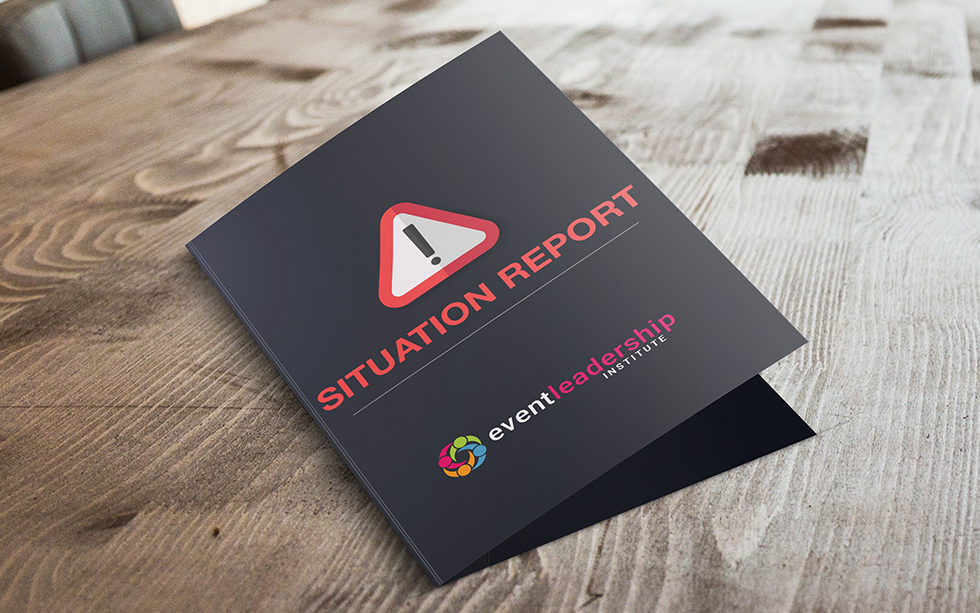Situation Report: Questions About the Purpose of Virtual Events
The Event Leadership Institute checks in weekly with two select groups from across the US and Canada: event-planning businesses and event-technology companies. Group members report on how their firms are faring and offer coping strategies amid the massive disruption from COVID-19. We call it the Situation Room. Recently, the conversation among event technology company owners covered the role that virtual events should play. Here are some highlights.
As a parade of free virtual summits and conferences emerges, members of the event community—planners and suppliers—are getting a chance to see, first-hand, what all the talk is about. Naturally, the owners of event technology companies are keenly interested in how companies execute events and how they might virtualize their own platforms to compete with or complement the incumbents. Some have questions about the concept of virtual events.
Should virtual content distribution even be called an event?
To call something an event denotes that it occurs in a specific place during a particular interval of time. Some in the Situation Room commented that virtual content might be more valuable outside the constraints of what we have come to understand in the physical world as an event.
For Example:
- Virtual event content can be archived so that it can be accessed on-demand, at a more convenient time without distraction.
- Participation metrics associated with on-demand content can help viewers assess the popularity and importance of specific presentations and drive more demand for them.
- Consumers, in general, are more accepting and even desirous of on-demand content today.
How should virtual events offer community interaction?
If virtual events are somewhat privileged over face-to-face events in their ability to capture and preserve content automatically, some wonder when and how networking among participants—the other hallmark of an in-person event—should be implemented. A few ideas emerged from the group, including to:
- Intentionally separate the synchronous and asynchronous aspects of the virtual event, making the synchronous components productive, focused, engaging and potentially serendipitous and the asynchronous components binge-worthy.
- Rethink the value of gathering people together while watching presentations if there is no associated and synchronous peer-to-peer interaction (complaining about the presentation audio in the chat isn’t engagement per se).
- Allow participants to view and/or participate when they want rather than cluttering a small window of opportunity (participant attention span and distraction-free availability) with programming that doesn’t interest them.
Should virtual events have the same objectives as live events?
Some of the angst over how to use virtual events comes from trying to define their highest purpose. For instance, COVID-19 aside, are virtual events (as a digital marketing channel) more suitable for demand generation and in-person events more conducive to relationship building and experiential education?
If we accept that virtual and face-to-face events should be used for different reasons, perhaps organizations should be thinking about each as separate platforms that sometimes overlap, much like the common space in a Venn diagram. How then do we maximize the area where they overlap?
But another way to approach virtual and live events (as separate channels) is to double down on their unique qualities. In other words, intentionally program live events to amplify relationships and experiences, but use virtual events almost exclusively as demand generation and sales pipeline building exercises.
Does the channel even matter?
The key to knowing when to deploy a live event vs. a virtual event may lie in understanding how to motivate and satisfy attendees, recognizing that motivation and satisfaction are often two different emotions. For example, attendees can be prompted to attend any type of event with the appropriate incentive (curiosity, FOMO, gift certificates, need) but leave unsatisfied. They can also be reluctant to attend (time away, family obligations, distraction, information is available elsewhere) but discover something valuable by doing so.
Perhaps the delivery channel—live or virtual—is irrelevant. The better objective may be more attendee-centric, figuring out how to motivate and satisfy participants on any and every channel, especially since every attendee cohort is different.
In times of uncertainty, asking questions, rethinking approaches and, ultimately, changing opinions is a healthy exercise. The Event Leadership Institute will continue sharing insight and experiences from the Situation Room here. Check back with us.


